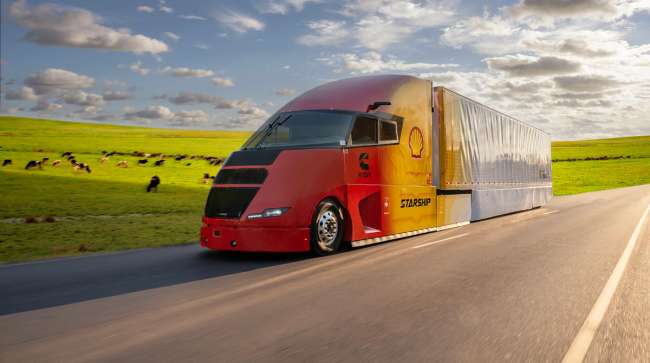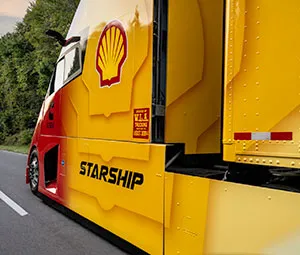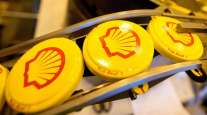Features Editor
Shell Starship 3.0 Demo Runs Produce Lower Emissions

[Stay on top of transportation news: Get TTNews in your inbox.]
During its Shell Ultimate Stopover 2023 event Oct. 10, the company announced the results from demonstration runs of its Shell Starship 3.0 truck that included a reduction of energy usage and carbon emissions.
The third-generation Class 8 vehicle, equipped with a Cummins X15N natural gas engine, ran a fully loaded trailer on an 840-mile loop throughout California, collecting performance data earlier this year.
During the runs, Starship 3.0 measured sustainable freight ton efficiency (FTE) using ton-miles of goods transported per kilogram of carbon dioxide emitted (CO2e), while operating near the maximum permissible gross vehicle weight of 80,000 pounds. These results were third-party monitored and verified by the North American Council for Freight Efficiency, as was done with the first two versions of the Starship demonstrations.
According to the data given by Selda Gunsel, global vice president of lubricants, mobility and fuels technology for Shell, Starship 3.0 achieved improvements over the U.S. average for diesel Class 8 trucks; 2.5 times better FTE assessed on a ton-miles per gallon basis and 3.23 times better FTE assessed on a ton-miles per kg of CO2e emitted basis. She also noted a 70% improvement in fuel economy, 10.8 mpg versus the U.S. average of 6.4 mpg.

Gunsel
“If we improve freight ton efficiency and fuel economy, the fleets can reduce their fuel consumption, which improves their total cost of ownership, which also improves carbon dioxide side emissions,” said Gunsel during the event. “It’s a great way of making an impact today in the decarbonization of commercial road transport.”
Emitting less CO2 than a diesel engine, Cummins’ X15N is powered by renewable natural gas, a fuel that can be derived from organic waste and is interchangeable with compressed natural gas and liquefied natural gas in transport vehicles.
“It has lower carbon intensity than diesel; in fact, if renewable natural gas is obtained from dairy cow waste, it has a negative carbon intensity, meaning it takes more CO2 out of the environment during production than during its combustion,” Gunsel said. “It’s a really good fuel to use for improving carbon emissions.”
Starting in 2018, the Starship Initiative was intended to be a material demonstration of how the industry can work together to drive significant reductions in energy usage and CO2 emissions, Gunsel noted.

Shell Starship 3.0 included components and features that promote lightweighting, low aerodynamic drag, and low-rolling-resistance tires. (Sonya Messier)
“Industry collaboration is critical in helping fleets achieve their sustainability goals,” she said. Along with Cummins’ driveline technology, Shell has also collaborated with Bridgestone for tires and Trillium (part of the Love’s brand) for renewable natural gas. “Our purpose is to power progress together by providing more and cleaner energy solutions so we can accelerate energy transition to a low-carbon future,” Gunsel said. “I think Starship supports this purpose and it clearly demonstrates the power of innovation and collaboration in terms of leading the way in for a cleaner sustainable energy future today and tomorrow.”
Shell Starship 3.0 also included components and features that promote lightweighting, low aerodynamic drag, and low-rolling-resistance tires. The company also operated using its Rotella natural gas engine oil and Spirax transmission and axle oils.
Shell also announced the addition of Starship China. The company hopes that previous results from the Starship initiative will “provide insights and learnings for the commercial road transport sector toward a lower carbon future.”
Want more news? Listen to today's daily briefing below or go here for more info:




